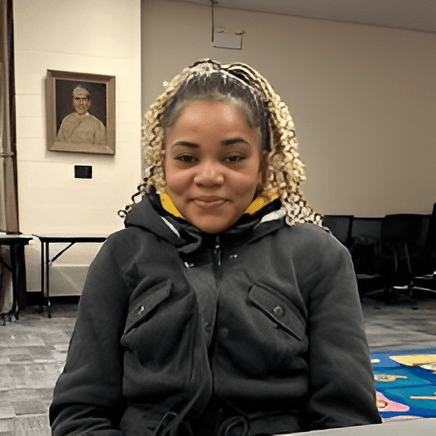- GiveDirectly gave $9,500 to 315 homeless families in Chicago to test if direct cash could help them get stably housed faster, the largest amount ever given in the U.S.
- All payments were delivered within 3.5 weeks, 17x faster than traditional housing placement programs, with strong safeguards to ensure safety and impact.
- We expect research results this year, which will have implications for how $10B+ in annual federal homelessness spending is used.
In 2024, the U.S. saw the highest number of people unhoused — 770,000 on a given night — despite $10B+ in federal spending on homelessness. There is existing evidence that a large lump sum of cash can help homeless families become stably housed, which is why GiveDirectly launched a program in Chicago doing just that.
We gave $9,500 to 315 homeless families in Chicago to study the impact
Our Stability for Investment Housing program is co-led by the Inclusive Economy Lab (“IEL”) and funded by Illinois’s Department of Human Services (IDHS), a continuation of a pilot started in 2023.
Housing instability often leads to poor outcomes for children, and the best research so far shows that family homelessness is mostly driven by financial hardship. We believe a large, one-time cash payment could be the most effective way to help, as it covers the high upfront costs of getting housed and gives families the flexibility they need to stabilize.
In June 2024, GiveDirectly paid 315 families $9,500. IDHS settled on this amount based on the cost of living, local rents, average family size, and cost of transportation.
This is the largest amount ever given to homeless American families. It may sound like a large amount, but it’s equivalent to what Illinois would pay to house a family in a shelter for just 90 days.
We also paid an equal number of unhoused families $500 as a “control group” so IEL could compare the two groups to learn to what degree the one-time $9,500 one-time cash reduces homelessness, affects families’ overall well-being, and is cost-effective.
See Appendix for how families qualify.
To ensure safety, we sent a $20 pre-payment before sending the full sum
Giving out large sums of money to vulnerable families can be life-changing but is not without risks. We implemented safeguarding and fraud mitigation measures to ensure the cash safely reached the intended participants.
One such measure was an added “token payment” step:
- 💸 We first sent a $20 test payment to those approved for the full $9,500.
- 📞 Our team then called participants to confirm their identity and ensure they received the $20 safely.
- 💰 Only after this check did we send the remaining $9,480.
This step helped us catch cases where someone might not be in a safe environment to receive funds.
Out of 315 post-$20 check-in calls, we flagged 53 for follow-up. Most were minor payment issues, a few had safeguarding concerns we resolved, and 4 were unreachable or ineligible, saving $38,000 in misdirected funds.
Even with this extra step, we delivered the entire $9,500 within as soon as 3.5 weeks of applying — 17x faster than the typical 12-18 month process to place families in stable housing.
Our results can impact how the $10B+ spent each year on homelessness is used
IEL expects to release research results later this year. We expect this to have a significant impact on national policy, as there is little evidence on how cash can help individuals and families become stably housed once homeless. Given the national scale of the homelessness problem, it’s important that policymakers learn from this innovation in Illinois.
Meanwhile, we are running the next phase of this program, specifically targeting homeless families with kids in Chicago Public Schools and several other districts. We hope the U.S. continues to explore giving cash to homeless populations so Connie and others can find stable homes.

“I’m in school. I have no support for my baby. [This payment] will go into my savings. Eventually when I am able to find a place, I can move in. It’ll help the process a little faster. Hopefully this is a faster way out.” – April 2024
Appendix
To qualify, families had to:
- Be without a safe, stable place to sleep — such as those living in shelters, places not meant for habitation, or exiting institutions after a short stay (known as “literal homelessness”)
- Have a child or be pregnant
- Be referred by case manager in participating Continuum of Care (CoC) shelter
- And not already enrolled in a permanent supporting housing program or recipient of Housing and Urban Development (HUD) voucher
GiveDirectly worked closely with 60+ CoCs and shelters to support identifying eligible families, and eligible families applied with case managers from March to May 2024. GiveDirectly subsequently held in-person and remote enrollment and benefits counseling to help families navigate any potential interactions with their existing benefits.